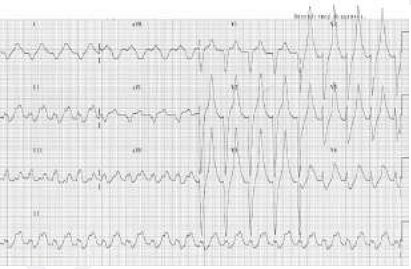Question:
A patient is brought to the OPD by his wife, complaining about difficulty expressing emotionsand not participating in daily activities. On examination, resting tremors and rigidity are noted.Given the possible diagnosis, which part of the brain is affected in this patient?
A patient is brought to the OPD by his wife, complaining about difficulty expressing emotionsand not participating in daily activities. On examination, resting tremors and rigidity are noted.Given the possible diagnosis, which part of the brain is affected in this patient?
Updated On: Jun 18, 2025
Basal ganglia
- Hippocampus
- Cerebellum
Premotor cortex
Hide Solution
Verified By Collegedunia
The Correct Option is A
Solution and Explanation
The symptoms described in the question suggest a possible diagnosis of Parkinson's disease, which is characterized by resting tremors, rigidity, and often bradykinesia (slowness of movement). These symptoms typically result from dysfunction in a specific part of the brain.
Key Symptom Analysis:
- Resting Tremors: An involuntary shaking of the hands, occurring when the muscles are relaxed.
- Rigidity: Increased muscle tone and resistance to movement.
- Difficulty Expressing Emotions: Often associated with disorders affecting brain regions involved in movement control and emotional expression.
Relevant Brain Anatomy: The Basal Ganglia is a group of nuclei in the brain deeply involved in controlling movement. It plays a crucial role in proper motor control and is intricately involved with conditions like Parkinson's disease. In Parkinson’s, the degeneration of dopamine-producing neurons in the substantia nigra, which is part of the basal ganglia, leads to the symptoms observed.
Conclusion: Based on the symptoms presented, the part of the brain affected in this patient is the Basal Ganglia.
Was this answer helpful?
0
0
Top Questions on Neuroanatomy
- The trigeminal nerve is the largest nerve with following branches:
A. Olfactory
B. Ophthalmic
C. Maxillary
D. Mandibular
Choose the most appropriate answer from the options given below:- CUET (PG) - 2025
- Zoology
- Neuroanatomy
- There was a question related to Shrugging off the Shoulder in Neck Surgery. What is it related to?
- NEET MDS - 2024
- Surgery
- Neuroanatomy
- A patient came to the medical OPD with complaints of polyuria. He has a history of undergoing total hypophysectomy. His Na+ levels are found to be 155 mEq/ L, urine osmolarity was 200 mOsm/L. What is the definitive management in this patient?
- NEET (PG) - 2023
- Medicine
- Neuroanatomy
- A 78-year-old woman presents with a progressive decline in daily activity. She gives a history of convulsions and visual hallucinations. She does not talk to anyone and keeps looking at the sky. Pathological examination shows the presence of Lewy bodies within the neurons. What is the most probable diagnosis?
- NEET (PG) - 2023
- Medicine
- Neuroanatomy
- A patient who is a known case of hypertension on multiple anti-hypertensive medications came to OPD. His ECG finding is given below. Which of the following drugs is responsible for the ECG finding?

- NEET (PG) - 2023
- Medicine
- Neuroanatomy
View More Questions
Questions Asked in NEET PG exam
The normal pH of arterial blood is:
- NEET (PG) - 2025
- General Science
Which enzyme is deficient in Gaucher’s disease?
- NEET (PG) - 2025
- General Science
Which of the following cranial nerves is responsible for the motor innervation of the muscles of mastication?
- NEET (PG) - 2025
- General Science
The anticoagulant effect of heparin is monitored using:
- NEET (PG) - 2025
- General Science
The causative agent of malaria is:
- NEET (PG) - 2025
- General Science
View More Questions